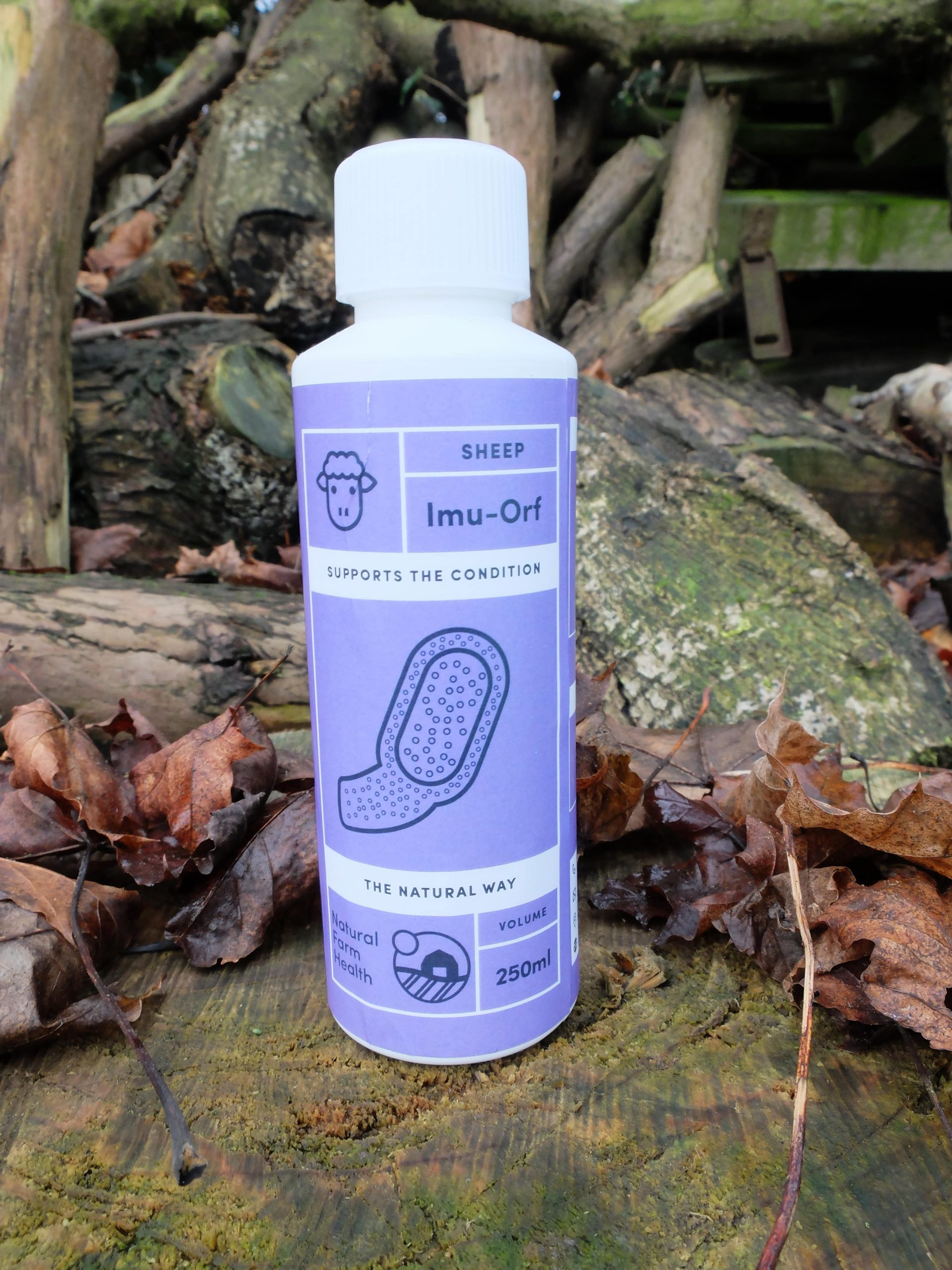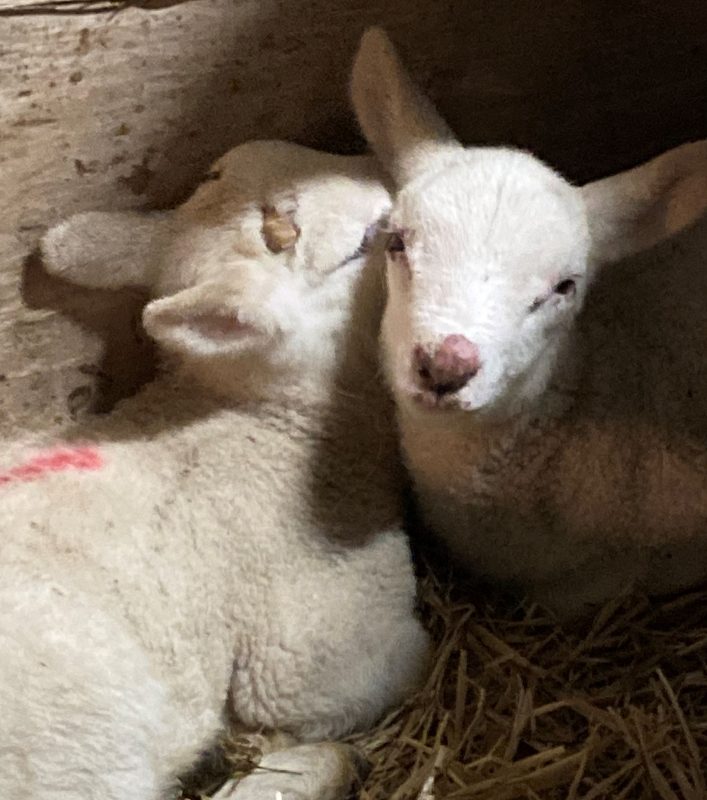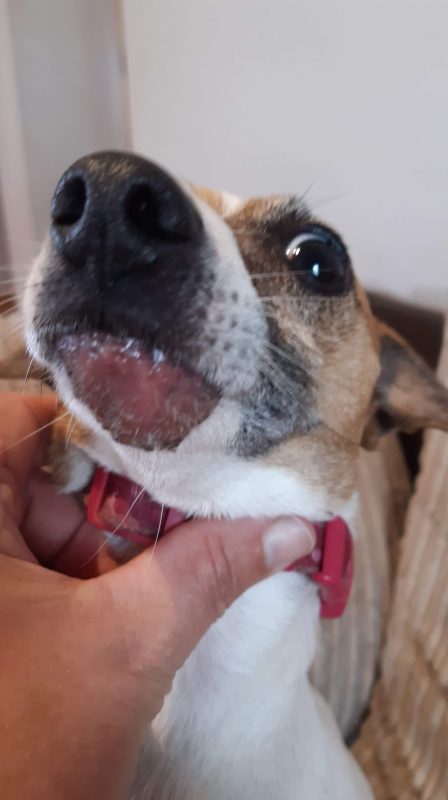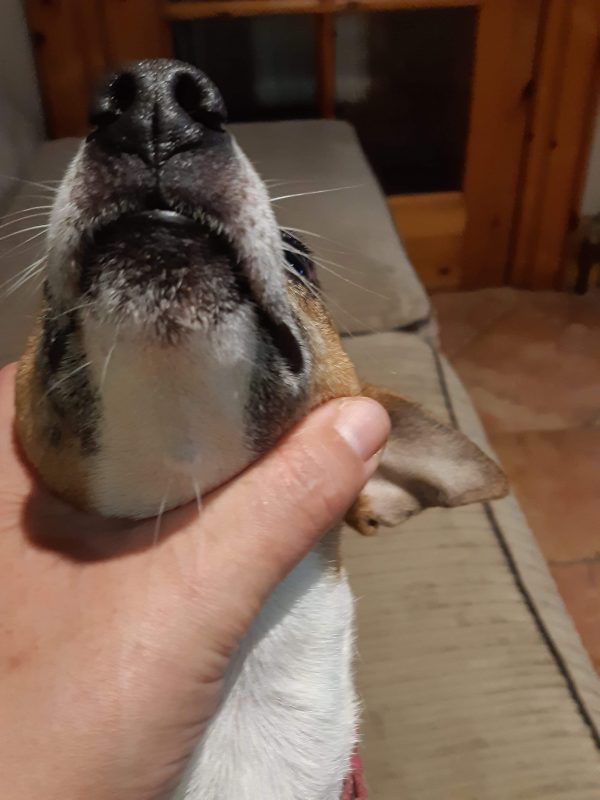Sheep
What is orf in sheep?
With lambing season in full swing in the UK and Ireland at present, many sheep farmers are facing the challenge of sheep with orf. According to the National Library of Medicine, orf prevalence in England was estimated to be 2% of ewes and 20% of lambs in 2019. So what exactly is orf in sheep and how can you spot it in your flock?
What does orf in sheep look like?
Orf (also known as scabby mouth) is a very contagious condition which causes scabby lesions around the nose, the inside and outside of the mouth and on other parts of the sheep’s body including the feet and teats in nursing ewes. It also affects goats as well as sheep and lambs.
The photograph above shows a one week old lamb with orf around its nose. Thankfully it recovered quickly after using Natural Farm Health’s Imuorf product for four days. Imuorf was also given to the other 150 lambs on the Co Down sheep farm and there was no spread of orf to them.
How does orf effect sheep and lambs?
It mainly effects lambs in their first year of life but infected lambs can transmit the virus to the ewes’ udders whilst suckling.
The thick brown orf scabs often bleed and they can impact on a lamb’s ability to eat and suckle. This can result in weight loss and in extreme cases, it can lead to death.
Should a ewe develop orf on her teats, she may reject the lamb. The ewe may develop secondary mastitis and the infected lamb will try to steal milk from another ewe which may then spread orf to other sheep in the flock.
How does orf spread?
Should the skin of the sheep get grazed or cut by a thistle or rough food, the orf virus can then attack the vulnerable areas which lead to an outbreak of orf. It can also spread on feeding equipment and is more prevalent in housing with many sheep. Orphaned lambs are particularly susceptible to orf.
The scabs that are shed from infected animals are another way for orf to spread. The virus can survive in dry housing for many years so orf can occur in subsequent lambing seasons unless there has been thorough cleaning and disinfecting of buildings. Natural Farm Health’s Cloversan and Enviromist could be used for this and shed scabs should be incinerated.
How to tackle orf in sheep and lambs?
- If possible, reduce stocking rates and lamb outdoors.
- Separate infected sheep from the rest of the flock
- All buildings and equipment used by infected sheep and lambs should be thoroughly disinfected.
- Make sure affected lambs are able to suck and eat
- Use Imuorf which is the natural way to tackle orf. It is a blend of natural extracts and organic compounds that help support adult sheep and lambs where there are challenges from orf. To find out more, please call 07711461133 or click on the image below.

ImuOrf – combating orf on sheep (250ml)
Case Study – Orf in Sheep
A few years ago, a County Antrim sheep farmer had dreadful problems with orf in his 100 ewes. Many lambs had painful sores around their mouths and many ewes had developed orf on their udders. Some ewes even had mastitis too as a result.
The following year, the farmer decided to try Imuorf to prevent a reoccurrence of the disastrous lambing season which had occurred the previous year. He gave Imuorf to every lamb after it was born and he has absolutely no problems with orf that year, both the lambs and the ewes.
He has now used Imuorf for three successive lambing seasons and thankfully he has had no further outbreaks of orf.
Humans can get orf too
Orf can always be passed from animals to humans so farmers should be very careful when handling sheep with orf. It can actually cause a nasty skin disease in humans so wearing gloves is advisable when handling sheep infected by the orf virus. Infected people can also pass orf to sheep.
Can dogs get orf?
Yes – dogs can catch orf too. This is Princess, a gorgeous Jack Russell Terrier who unfortunately picked up orf from sheep on the Kilrea farm where she lives. The middle picture above shows the painful orf sore under her chin. Her owner added Imuorf (an adapted version for dogs) to her food for a few days. The photograph on the right was taken four weeks later and thankfully for Princess the orf infection had cleared up.





